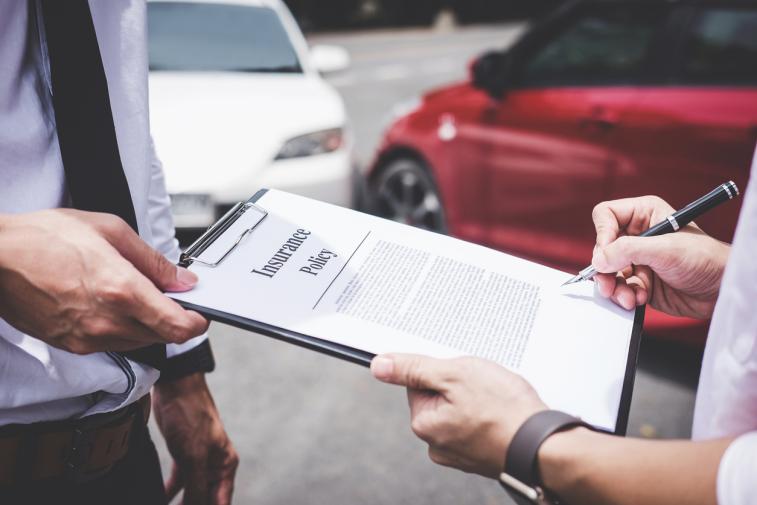"Guaranteed auto protection" is known as the "Gap" in the insurance market. It is only necessary to get this form of insurance for a brief time while you have a loan that exceeds the value of the automobile you intend to buy. If a car is totaled in an accident, the insurance company would be responsible for the difference in weight. This is not covered by standard auto insurance.
Gap Insurance for a Car: What Is It?
A vehicle's "gap insurance" covers the difference between its insured value and the outstanding loan or lease balance the owner is liable for paying back. In the event that your car is wrecked or stolen before your loan is paid off, you'll need gap insurance to cover the shortfall between your monthly auto insurance premium and the amount owed. Your lender may require gap insurance if you're financing the purchase of a specific type of vehicles, such as a car, truck, or SUV. For example, premium cars, SUVs, or sports utility vehicles may deteriorate and lose value faster than usual.
How Does Gap Insurance Work?

A motorist might easily owe a loan or leasing firm more money than the automobile is worth in its first few years of ownership. Until your monthly payments equal enough equity in the car, a small down payment and an extended loan or lease term should suffice. Equity must match the current market worth of the car. Regular insurance will pay for the vehicle at its actual market worth, not the price you paid. The difficulty is that automobiles depreciate significantly in their first few years on the road. Even in the first month of ownership, the average car loses 10% of its value.2
Example of Car Gap Insurance
Let's say you just paid $28,000 for a brand-new automobile. Your loan balance was reduced to $25,200 after you made a 10% down payment. You have a five-year car loan. You've spent $5,040 in the first year. You're still owed $20,160.
When the automobile is totaled after a year of use, the insurance company considers it a total loss. Your auto insurance policy says you're entitled to the vehicle's total market value. Your automobile is worth 20% less than you purchased a year ago, much like the average vehicle on the road.
Is Gap Insurance Necessary for You?

Many people are familiar with the term "upside-down," which is used in connection to a house loan. The premise remains the same if the object funded is a house or an automobile. You shouldn't be too alarmed. You won't own the house or automobile outright even if you put down a tiny deposit and pay the remainder over five years or more in small monthly installments. Ownership of the property increases and debt decreases as the principal is paid in full.
Gap Insurance vs. Replacement Value
Often referred to as New Automobile Replacement Insurance, Replacement Value Insurance is a policy option offered by some car insurance providers. If your vehicle is totaled, this option provides you the money to buy a new automobile of the same make and model rather than the depreciated car's worth.
Gap insurance can be replaced with this form of coverage. For the most part, you can only get this sort of insurance if you also get collision and comprehensive coverage for your vehicle, and it must fulfill certain age and mileage restrictions. This policy, on the other hand, can replace gap insurance if you are eligible.
Comparison Of The Benefits And Drawbacks of Auto Gap Insurance
The cost of a new automobile has skyrocketed in recent years. Over $32,000 is the typical loan amount for a brand-new car. However, if you still owe more on the vehicle than its actual cash worth, you may want to consider gap insurance as an addition to your collision coverage. If your automobile is damaged in an accident, your collision insurance coverage will cover the cost of repairs.
This is the most likely scenario for new automobile buyers who put down less than 20% and want to pay off their loan over five years or more. You can find out if you need gap insurance by looking at the Kelley Blue Book. Is the automobile you owe more than its current market value? If this is the case, you require gap coverage.
What Is the Cost of Gap Insurance?
According to the Insurance Industry Institute, you can add gap insurance to your ordinary comprehensive vehicle insurance policy for as low as $20 a year. As a result, your final cost will fluctuate following standard insurance rules. To put it another way, the price of a car depends on a variety of factors, including your location, age, driving record, and the specific model. 5% to 6% of your accident and comprehensive insurance rates are what you may expect to pay with a large insurer.

Should I Max out My 401(k)

Is Gap Insurance Necessary?

Your Ultimate Guide on Umbrella Companies and Their Advantages

Costs Of Raising a Baby

Your Test Drive Checklist: 5 Essential Questions for Car Buyers

Understanding the Power of Leverage in Investing: A Comprehensive Guide

How To Get The Best Rates On Renter's Insurance

Tax Refund Mastery: 7 Essential Tips for a Better Financial Return

Demystifying the Role of Certified Financial Planners (CFP)

Understanding High-water marks: What They Mean for Investors

See: How to Use a Moving Average to Buy Stocks?
